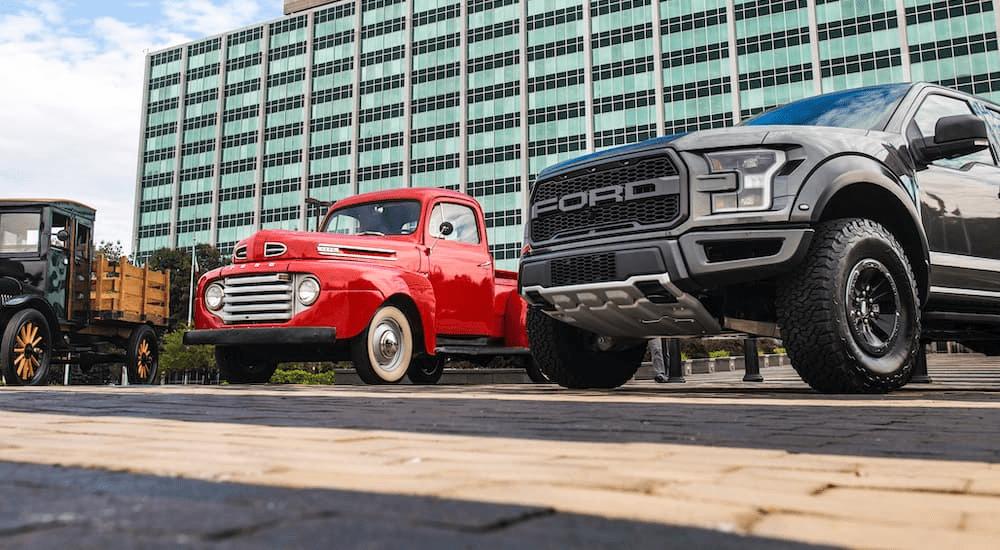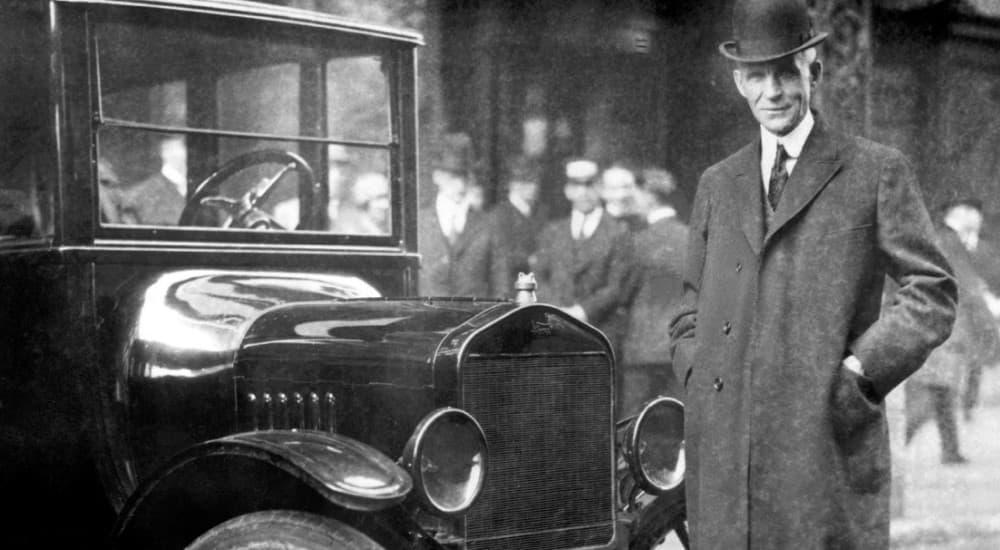“If at first you don’t succeed, try, try again.” The adage encourages us to never give up after failure, but that’s often easier said than done. Our egos need repairing as we pull ourselves up from our proverbial bootstraps to make our second, third, or umpteenth attempt at something. However, persistence often pays off, especially when we approach our failures as learning opportunities and stepping stones to define a new path.
While society is filled with these words of wisdom, they’re often overshadowed by the success stories of innovators like Henry Ford, whose ingenuity is apparent at any Ford dealer across the country. We see trucks like the F-150 and think back to the Model T, assuming Ford was extraordinarily gifted and talented. Don’t get me wrong, he certainly was, but that talent didn’t come without setbacks and failures.
Henry Ford’s failures are part of what makes him extraordinary. He’s often credited with putting the world on wheels, but he didn’t invent the automobile. Instead, he made it more accessible and practical, giving us the freedom to explore the world beyond our trusty steeds. However, none of that would’ve been possible without his rite of passage and the many failures that led to his worldwide success. Ford said it best, “Failure is simply the opportunity to begin again, this time more intelligently.”
#1. The Detroit Automobile Company: The Cost of Perfectionism
Ford grew up on a farm in Dearborn, Michigan, but had little interest in following in his father’s footsteps. Instead, he pursued his passion for machinery, working with railroad cars and steam engines before being hired at Edison Electric Illuminating Company. By the late 1890s, he climbed the corporate ladder of Thomas Edison’s company but spent the rest of his time experimenting with and building a horseless carriage. By 1896, his diligence paid off when he completed the Quadricycle, a self-propelled vehicle outfitted with bicycle wheels and a tiller-like steering wheel.
Ford knew he was onto something and spent the next two years developing his next prototype. By then, he was so passionate about his inventions that he persuaded a dozen investors to form the Detroit Automobile Company in 1899. Ford left his position with Edison Electric and immediately got to work; however, his perfectionist tendencies ultimately led to the company’s demise.
The Detroit Automobile Company produced its first delivery truck in 1900, garnering widespread praise in the local media for Ford’s design. However, Ford wasn’t thrilled and asked his investors for more funding and time. He argued the delivery truck was unreliable, too heavy, and impossible to handle. With the investors already losing money, they pulled the plug on the Detroit Automobile Company after only 18 months.
#2. The Henry Ford Company: The Future of Cadillac
Despite the failure of the Detroit Automobile Company, Ford refused to give up and turned his attention to racing to rebuild his reputation. He teamed up with his longtime designer, Ed “Spider” Huff, and several others to build the 1901 Ford “Sweepstakes” Race Car. The 26-horsepower car made its racing debut against the best-known racecar driver in America, Alexander Winton, on a horse track in Grosse Pointe, Michigan, in 1901. Ford was, without question, the underdog and was never expected to win.
Was Ford’s ego so inflated that he believed he could win even when the odds were against him? Perhaps, or maybe he knew the power of perseverance and self-belief. Although Ford immediately fell behind in the race, he quickly found his rhythm and ultimately won the 10-lap race after Winton’s car failed due to mechanical issues. Ford’s victory was sweet, rebuilding his reputation and attracting a second wave of investments from Detroit businessman William H. Murphy. Think about that for a moment. Murphy was a primary investor in the Detroit Automobile Company but was so impressed by Ford that he made a second investment just months later.
Murphy knew from experience that he needed more control over Ford, so he set high expectations as the Henry Ford Company opened its doors in 1901. However, Ford wasn’t thrilled with the chain of command and balked when Murphy hired someone to manage his design and build process. After five months, Ford left the company with his name still on the door. By 1902, the Henry Ford Company rebranded as the Cadillac Automobile Company, a name synonymous with luxury under the General Motors marque.
#3. The Ford Motor Company and a One-Man Show
Ford eventually turned his failures into success with the Model T and the Ford Motor Company. He finally had a model he was proud of and investors that supported his vision. However, growing pains soon followed as production ramped up, pushing his workers harder than ever.
Ford implemented a moving assembly line to ease the workload, but the repetitive work led to high turnover. The company had 14,000 positions to fill, but it took hiring 53,000 people each year to fill them. It wasn’t until Ford nearly doubled the wages to $5 per day in 1914 that things started to change as the workers who made the cars could finally afford to buy them. Ford not only stabilized his workforce but dramatically changed society with his labor philosophy, later introducing the five-day workweek.
With his workforce content, Ford made another significant transformation in the company that would fail to a certain degree. He spent years fighting with investors after his first two failed companies, so with the Ford Motor Company’s growing success, Ford felt it was time to do something different. Instead of relying on his investors, Ford bought them out and became the sole owner of the largest automobile company in the world. He believed making the Ford Motor Company a one-man show would solve all his problems.
By the 1920s, Ford’s ego outweighed his business savviness and nearly cost him his success. He still believed the Model T was the perfect car for Americans and refused to modify the Model T to appeal to evolving needs. For example, he ignored that drivers were looking for more stylish and luxurious alternatives. To Ford, drivers had everything they needed in the Model T until its declining sales proved otherwise.
Ford’s sudden success left him blindsided that American drivers could want more than what he offered with the Model T. By the late 1920s, the writing was on the wall, and Ford had no choice but to bend to his consumers’ demands. He stopped production of the Model T and returned to the drawing board to design the Model A, which stayed in production for four years until a newer model replaced it. Ford finally learned one of the most valuable lessons of his career.
If at First You Don’t Succeed…
Henry Ford approached failure as a learning tool and an opportunity to begin anew with a different strategy. He learned not to see failure as a personal setback or a critique of his ingenuity. Perhaps it was his ego, but even so, he approached every failure as a rite of passage. He chose to persevere because he genuinely believed in his talents and vision.
Ford’s perseverance led him to the Model T and labor innovations like the moving assembly line, the five-day workweek, and the importance of reinvesting in his employees. It also led the automotive pioneer to discover that one man can’t run the world on his ideas alone. Instead, he must work with others and keenly listen to the needs of his consumers so that his products remain relevant. Today, the best embodiment of that insightful lesson is at every Ford dealer in the country.





